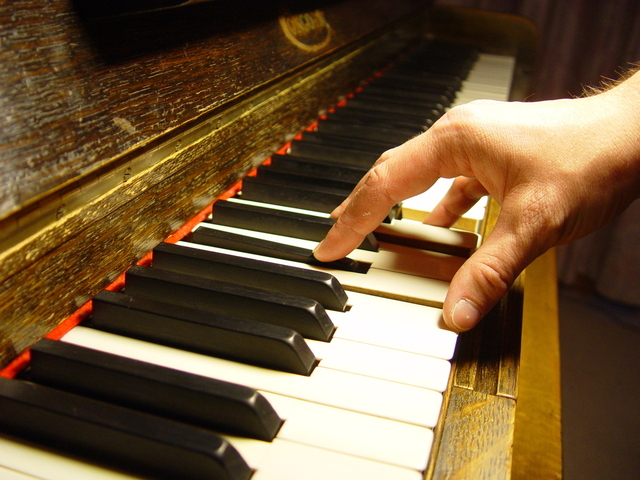
As I write this post, I can easily say we are living in “historic times”. Because of the current health crisis, people from all over the world are staying inside (thankfully!) much more than usual.
And based upon the significant increase in inquiries about my remote services and my e-books, I can also safely assume that musicians worldwide are practicing their instruments considerably more than usual, as well.
And that’s a good thing, perhaps a small silver lining to this cloud.
So I thought I’d share some very basic principles based upon the Alexander Technique, as well as my experience coaching musicians of all kinds (as well as my own experiences practicing saxophone and improvisation).
These are things to pay attention to that can better enable you to optimize your practice efforts, as well as help you avoid injury or strain from increasing your daily practice time.
I’ve narrowed the topic down to what I consider to be five of the most essential things you can take into account (i.e., five “checkpoints”) in the practice room.
These checkpoints serve as a quick, simple and comprehensive way to take care of yourself as you practice. Here they are:
1. Your head/neck relationship
In Alexander Technique jargon, the dynamic relationship of your head to your spine is called the “primary control”. F.M. Alexander discovered that this relationship is key to governing your overall coordination (hence, the word “primary”).
So as you practice, take a bit of time to notice what’s going on between your head and neck. Is your head balancing freely as you start to play, or are you stiffening your neck, perhaps pulling your head downwards into your spine?
If you allow your head to release upward into free and easy balance on your spine, you might also notice that your shoulders and arms become freer.
If you allow for it, this freedom will tend to spread throughout your body all the way down to your feet, gently encouraging you to release in your back, and unlock your knees and your ankles.
Think of your entire self as expanding into length and width as you play. This expansion is not rigid “posture”, but rather, is dynamic elasticity.
2. Your connection to the ground
Your connection to the ground both supports your head/neck relationship, as well as is influenced (for better or worse) by it.
Allow the ground (or if you’re sitting, the chair) to accept your weight, but don’t collapse downward to do so. Think of your body has having a light, easy and upward suspension that interacts dynamically and efficiently with the ground to counter the downward pull of gravity.
3. Your breathing
Whether you use air to make sound on your instrument, or not, breathing is essential to you coordination, poise, consciousness and power.
For the most part your breathing will “do itself” just fine if you let it. In other words, your brain knows just what to do to breathe optimally if your habits don’t interfere.
In short, think of your entire torso (especially your ribs!) as being free to move in all three dimensions (side to side, front to back, top to bottom) in order to produce the movements necessary for inhalation and exhalation. Don’t aim for anything that feels labored or unnatural.
4. Your external environment
No matter where you practice, always use your senses/attention to include the room you’re in.
This is a matter of allowing your senses to open up and reach outward. So listen for your sound out into the room (as well as hearing or “feeling” it close to you or even “inside” of you).
And let your eyes be free to see the room as well. Not in any kind of distracting way, but rather, as a way for you to get better oriented into your practice space.
If you tend to always close your eyes when you practice a particular thing, experiment with what it’s like to not do that, to actually let your attention be flexible enough to go inwards (towards you) and outwards (where your sound ultimately comes to life) at the same time. Think of your attention as being “inclusive and flexible”.
5. Your use of time
When I talk of “use of time” here, I’m really talking about time as a broad, multi-faceted subject.
There is “time” as it relates to how you play rhythms, meter and inflections. What you do with your metronome, or backing track or drum groove, etc. Because all of your coordination ultimately depends upon your perception of time (“pulse”), I encourage you to make time the most essential musical element whenever you practice, no matter what you’re practicing (even when working on your sound).
And then there is how you use your time to pause and redirect your attention/efforts while practicing a particular thing. It is never a waste of time to stop, notice and redirect. This is an essential tool of the Alexander Technique, and something that takes a good deal of discipline to implement (but it is so well worth it!)
As you learn to pause and redirect, you open yourself up to the possibility of discovery, change and growth.
And finally there is how you use your time to take care of yourself during your practice session.
Make sure your taking lots of breaks (lasting even just a few seconds between iterations of whatever it is you’re practicing, to 5 to 15 minute breaks during your practice session). Doing this will not only keep you healthier (avoiding strain and injury), but will also keep your attentional capacity fresher and more effective.
So enjoy your extra practice time. Use these five checkpoints from time to time during your practice session. Be safe, and stay flexible, curious and productive.
Pingback: Favorite blog posts, April 2020 | Bret Pimentel, woodwinds